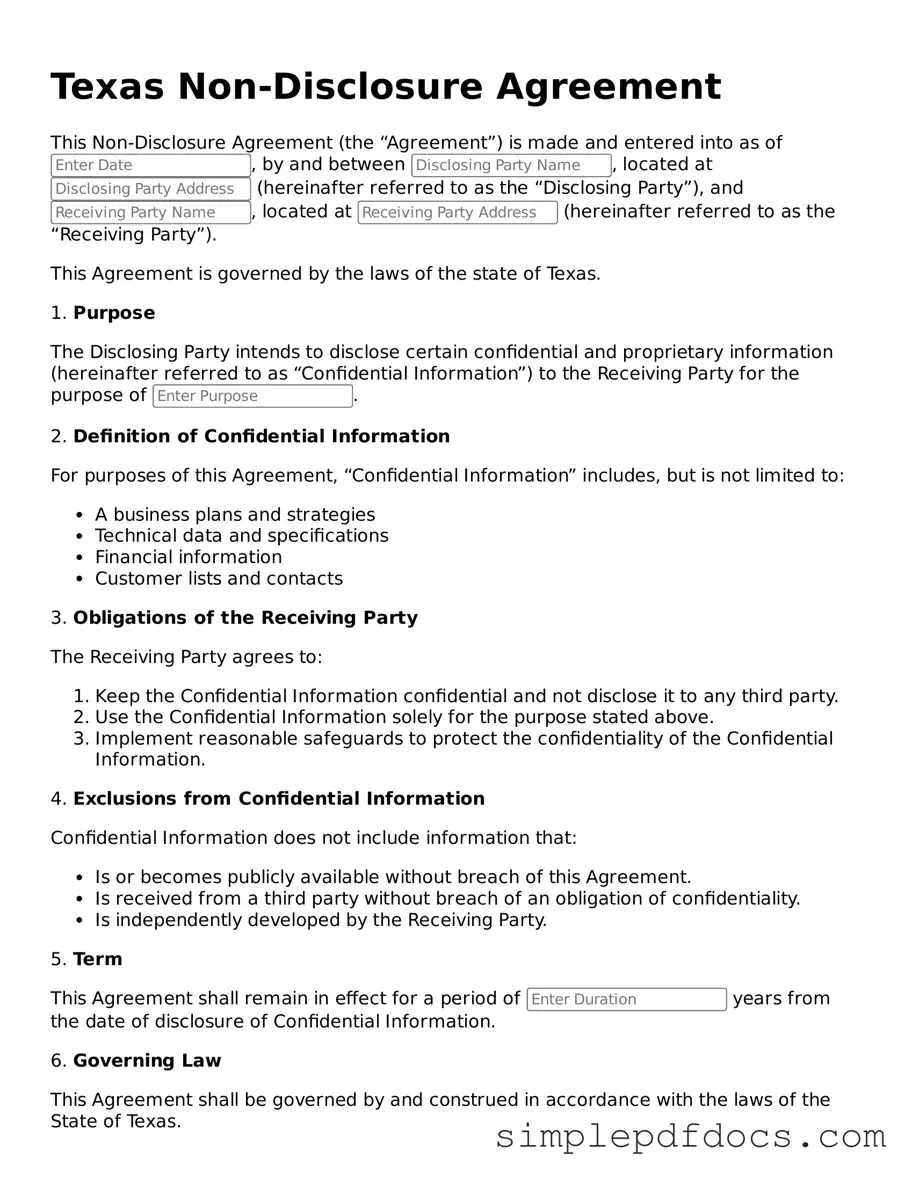In Texas, the Non-disclosure Agreement (NDA) serves as a crucial legal tool for individuals and businesses looking to protect sensitive information from unauthorized disclosure. This form outlines the obligations of the parties involved, ensuring that confidential information shared during business discussions or collaborations remains secure. Key components of the Texas NDA include the definition of what constitutes confidential information, the duration of the confidentiality obligation, and the permitted uses of the disclosed information. Additionally, the agreement typically specifies the consequences of breach, providing a framework for legal recourse if the terms are violated. By formalizing the expectations between parties, the NDA not only fosters trust but also safeguards proprietary information, which is vital for maintaining a competitive edge in today’s fast-paced market. Understanding the nuances of this agreement can empower individuals and businesses to navigate their professional relationships with confidence and clarity.
